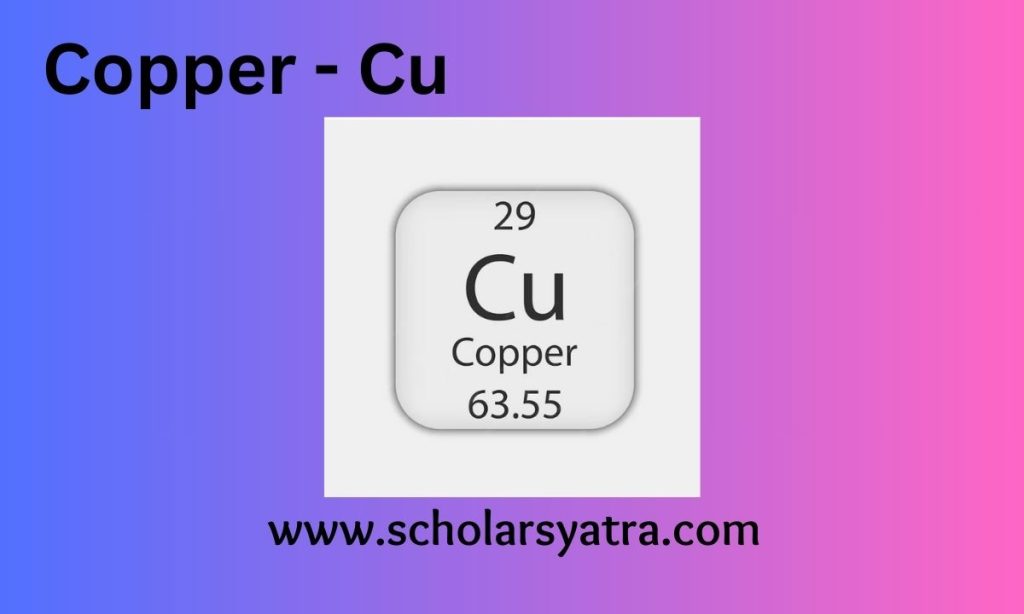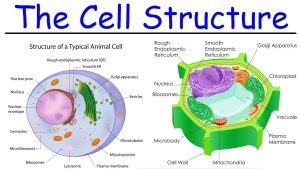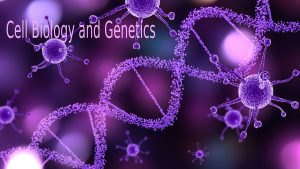Copper is one of the most essential and historically significant metals. Its chemical symbol, Cu, comes from the Latin word cuprum, which was derived from Cyprus, an ancient source of the metal. Copper is a transition metal, widely recognized for its reddish-gold color, excellent conductivity, and corrosion resistance, making it valuable in various applications, from electronics to architecture.
Table of Contents
ToggleThis topic will explore copper’s properties, its occurrence in nature, extraction processes, and its applications, giving chemistry students a detailed understanding of this transition element.
1. Basic Information
- Atomic Number: 29
- Atomic Mass: 63.546 g/mol
- Group: 11 (Transition Metals)
- Period: 4
- Electron Configuration: [Ar] 3d¹⁰ 4s¹
- Oxidation States: +1, +2 (most common), +3 (rare)
2. Physical Properties of Copper
Copper exhibits several physical properties that make it useful in various industries:
- Color and Luster: Copper has a reddish-brown hue when freshly exposed, but it can develop a greenish patina (copper carbonate) due to oxidation. It has a bright metallic luster.
- Malleability and Ductility: It is highly malleable, meaning it can be hammered into thin sheets, and ductile, meaning it can be drawn into wires.
- Thermal and Electrical Conductivity: Copper is an excellent conductor of heat and electricity, second only to silver. This makes it indispensable in the electrical industry.
- Melting and Boiling Points: Copper has a melting point of 1,085°C and a boiling point of 2,562°C.
3. Chemical Properties of Copper
Copper has a moderately low reactivity compared to other metals. Key chemical properties include:
- Reactivity with Air: At room temperature, copper reacts slowly with oxygen in the air, forming copper oxide (CuO), which gives the metal a tarnished appearance. However, it doesn’t corrode as rapidly as iron, because the layer of oxide protects the metal underneath.
2Cu+O2→2CuO
- Reactivity with Water: Copper is generally resistant to water but can react with moist air over time, producing green copper carbonate (verdigris).
2Cu+H2O+CO2+O2→Cu2CO3(OH)2
- Reactivity with Acids: Copper does not react with dilute acids like hydrochloric acid or sulfuric acid under normal conditions, because it is below hydrogen in the reactivity series. However, it will react with concentrated sulfuric acid or nitric acid.
When reacting with concentrated sulfuric acid: Cu+2H2SO4→CuSO4+SO2+2H2O
When reacting with nitric acid: 3Cu+8HNO3→3Cu(NO3)2+2NO+4H2O
Nitric acid oxidizes copper, resulting in copper(II) nitrate and nitrogen dioxide (NO₂) in concentrated acid, or nitric oxide (NO) in dilute acid.
4. Occurrence of Copper in Nature
Copper occurs naturally in both its native form and in various ores. Native copper is found in the Earth’s crust but in limited quantities. The most common copper ores are:
- Chalcopyrite (CuFeS₂): The most abundant copper ore.
- Bornite (Cu₅FeS₄): A valuable copper ore.
- Malachite (Cu₂CO₃(OH)₂): A green copper carbonate hydroxide mineral.
- Cuprite (Cu₂O): A red copper oxide ore.
Copper is generally found in mineral deposits and is extracted through mining, typically by methods like open-pit mining or underground mining, depending on the location of the ore deposits.
5. Extraction of Copper
Copper extraction involves several stages, starting with the mining of copper ores, followed by smelting and refining to obtain pure metal. The steps include:
- Crushing and Grinding: The ore is first crushed into small pieces and ground into fine powder.
- Concentration by Froth Flotation: The powdered ore is mixed with water, and specific chemicals are added to make the copper minerals hydrophobic (repellent to water). Air is then bubbled through the mixture, and the copper-containing particles are carried to the surface to form a froth.
- Roasting: In this step, the concentrated ore is heated in the presence of oxygen, converting sulfide ores into copper oxide and sulfur dioxide.
2CuFeS2+O2→Cu2S+2FeS+SO2
- Smelting: The roasted copper ore is mixed with silica (sand) and heated in a furnace. Silica acts as a flux, removing iron impurities as slag, while copper forms a liquid matte.
Cu2S+O2→2Cu+SO2
- Electrolytic Refining: To obtain pure copper, the impure copper is refined through electrolysis. The impure copper serves as the anode and a thin sheet of pure copper acts as the cathode. In an electrolytic bath containing copper(II) sulfate (CuSO₄), copper ions migrate to the cathode, depositing pure copper.
6. Uses of Copper
Copper’s unique properties have made it an integral part of human civilization for millennia. Key applications include:
- Electrical Wiring: Due to its excellent electrical conductivity, copper is widely used in wiring, cables, and electrical components.
- Electronics: Printed circuit boards, electrical motors, transformers, and connectors often rely on copper.
- Plumbing: Copper’s resistance to corrosion and microbial growth makes it ideal for water pipes and fittings.
- Alloys: Copper is a key component in numerous alloys, such as:
- Bronze (copper and tin): Used in tools, sculptures, and musical instruments.
- Brass (copper and zinc): Used in decoration, coins, and machinery.
- Coinage: Copper and its alloys are used in many coins due to their durability and resistance to wear.
- Antimicrobial Surfaces: Copper has natural antimicrobial properties, which make it ideal for touch surfaces, such as doorknobs and medical equipment.
7. Biological Importance
Copper is an essential trace element in living organisms. It is involved in many biological processes, including:
- Enzyme Function: Copper is a cofactor for enzymes like cytochrome c oxidase, which plays a crucial role in cellular respiration.
- Hemoglobin Production: Copper is involved in the formation of hemoglobin and helps in the transport of iron in the body.
- Antioxidant Defense: Copper-based enzymes like superoxide dismutase (SOD) protect cells from oxidative stress by neutralizing free radicals.
However, excess copper can be toxic, leading to conditions like Wilson’s disease, where copper accumulates in the body.







